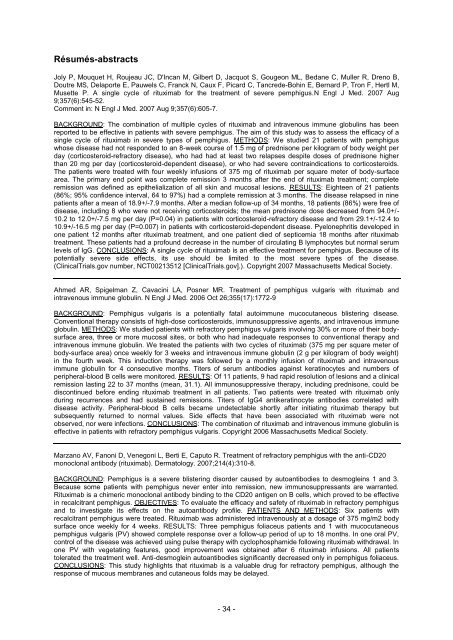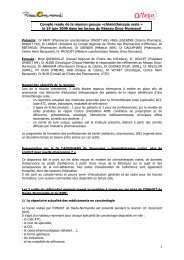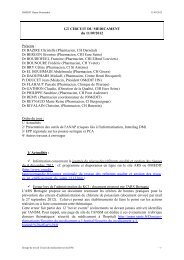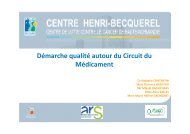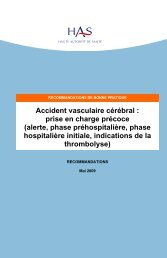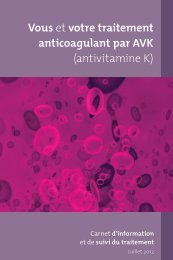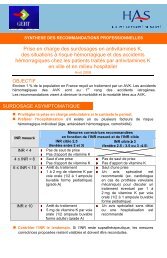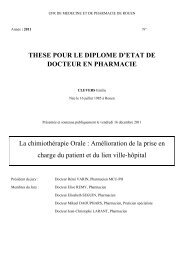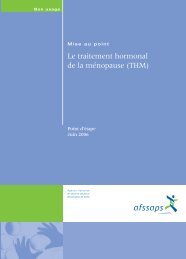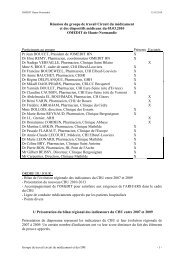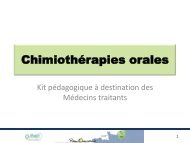RBU du Rituximab - OMéDIT de Haute-Normandie
RBU du Rituximab - OMéDIT de Haute-Normandie
RBU du Rituximab - OMéDIT de Haute-Normandie
You also want an ePaper? Increase the reach of your titles
YUMPU automatically turns print PDFs into web optimized ePapers that Google loves.
Résumés-abstracts<br />
Joly P, Mouquet H, Roujeau JC, D'Incan M, Gilbert D, Jacquot S, Gougeon ML, Bedane C, Muller R, Dreno B,<br />
Doutre MS, Delaporte E, Pauwels C, Franck N, Caux F, Picard C, Tancre<strong>de</strong>-Bohin E, Bernard P, Tron F, Hertl M,<br />
Musette P. A single cycle of rituximab for the treatment of severe pemphigus.N Engl J Med. 2007 Aug<br />
9;357(6):545-52.<br />
Comment in: N Engl J Med. 2007 Aug 9;357(6):605-7.<br />
BACKGROUND: The combination of multiple cycles of rituximab and intravenous immune globulins has been<br />
reported to be effective in patients with severe pemphigus. The aim of this study was to assess the efficacy of a<br />
single cycle of rituximab in severe types of pemphigus. METHODS: We studied 21 patients with pemphigus<br />
whose disease had not respon<strong>de</strong>d to an 8-week course of 1.5 mg of prednisone per kilogram of body weight per<br />
day (corticosteroid-refractory disease), who had had at least two relapses <strong>de</strong>spite doses of prednisone higher<br />
than 20 mg per day (corticosteroid-<strong>de</strong>pen<strong>de</strong>nt disease), or who had severe contraindications to corticosteroids.<br />
The patients were treated with four weekly infusions of 375 mg of rituximab per square meter of body-surface<br />
area. The primary end point was complete remission 3 months after the end of rituximab treatment; complete<br />
remission was <strong>de</strong>fined as epithelialization of all skin and mucosal lesions. RESULTS: Eighteen of 21 patients<br />
(86%; 95% confi<strong>de</strong>nce interval, 64 to 97%) had a complete remission at 3 months. The disease relapsed in nine<br />
patients after a mean of 18.9+/-7.9 months. After a median follow-up of 34 months, 18 patients (86%) were free of<br />
disease, including 8 who were not receiving corticosteroids; the mean prednisone dose <strong>de</strong>creased from 94.0+/-<br />
10.2 to 12.0+/-7.5 mg per day (P=0.04) in patients with corticosteroid-refractory disease and from 29.1+/-12.4 to<br />
10.9+/-16.5 mg per day (P=0.007) in patients with corticosteroid-<strong>de</strong>pen<strong>de</strong>nt disease. Pyelonephritis <strong>de</strong>veloped in<br />
one patient 12 months after rituximab treatment, and one patient died of septicemia 18 months after rituximab<br />
treatment. These patients had a profound <strong>de</strong>crease in the number of circulating B lymphocytes but normal serum<br />
levels of IgG. CONCLUSIONS: A single cycle of rituximab is an effective treatment for pemphigus. Because of its<br />
potentially severe si<strong>de</strong> effects, its use should be limited to the most severe types of the disease.<br />
(ClinicalTrials.gov number, NCT00213512 [ClinicalTrials.gov].). Copyright 2007 Massachusetts Medical Society.<br />
Ahmed AR, Spigelman Z, Cavacini LA, Posner MR. Treatment of pemphigus vulgaris with rituximab and<br />
intravenous immune globulin. N Engl J Med. 2006 Oct 26;355(17):1772-9<br />
BACKGROUND: Pemphigus vulgaris is a potentially fatal autoimmune mucocutaneous blistering disease.<br />
Conventional therapy consists of high-dose corticosteroids, immunosuppressive agents, and intravenous immune<br />
globulin. METHODS: We studied patients with refractory pemphigus vulgaris involving 30% or more of their bodysurface<br />
area, three or more mucosal sites, or both who had ina<strong>de</strong>quate responses to conventional therapy and<br />
intravenous immune globulin. We treated the patients with two cycles of rituximab (375 mg per square meter of<br />
body-surface area) once weekly for 3 weeks and intravenous immune globulin (2 g per kilogram of body weight)<br />
in the fourth week. This in<strong>du</strong>ction therapy was followed by a monthly infusion of rituximab and intravenous<br />
immune globulin for 4 consecutive months. Titers of serum antibodies against keratinocytes and numbers of<br />
peripheral-blood B cells were monitored. RESULTS: Of 11 patients, 9 had rapid resolution of lesions and a clinical<br />
remission lasting 22 to 37 months (mean, 31.1). All immunosuppressive therapy, including prednisone, could be<br />
discontinued before ending rituximab treatment in all patients. Two patients were treated with rituximab only<br />
<strong>du</strong>ring recurrences and had sustained remissions. Titers of IgG4 antikeratinocyte antibodies correlated with<br />
disease activity. Peripheral-blood B cells became un<strong>de</strong>tectable shortly after initiating rituximab therapy but<br />
subsequently returned to normal values. Si<strong>de</strong> effects that have been associated with rituximab were not<br />
observed, nor were infections. CONCLUSIONS: The combination of rituximab and intravenous immune globulin is<br />
effective in patients with refractory pemphigus vulgaris. Copyright 2006 Massachusetts Medical Society.<br />
Marzano AV, Fanoni D, Venegoni L, Berti E, Caputo R. Treatment of refractory pemphigus with the anti-CD20<br />
monoclonal antibody (rituximab). Dermatology. 2007;214(4):310-8.<br />
BACKGROUND: Pemphigus is a severe blistering disor<strong>de</strong>r caused by autoantibodies to <strong>de</strong>smogleins 1 and 3.<br />
Because some patients with pemphigus never enter into remission, new immunosuppressants are warranted.<br />
<strong>Rituximab</strong> is a chimeric monoclonal antibody binding to the CD20 antigen on B cells, which proved to be effective<br />
in recalcitrant pemphigus. OBJECTIVES: To evaluate the efficacy and safety of rituximab in refractory pemphigus<br />
and to investigate its effects on the autoantibody profile. PATIENTS AND METHODS: Six patients with<br />
recalcitrant pemphigus were treated. <strong>Rituximab</strong> was administered intravenously at a dosage of 375 mg/m2 body<br />
surface once weekly for 4 weeks. RESULTS: Three pemphigus foliaceus patients and 1 with mucocutaneous<br />
pemphigus vulgaris (PV) showed complete response over a follow-up period of up to 18 months. In one oral PV,<br />
control of the disease was achieved using pulse therapy with cyclophosphami<strong>de</strong> following rituximab withdrawal. In<br />
one PV with vegetating features, good improvement was obtained after 6 rituximab infusions. All patients<br />
tolerated the treatment well. Anti-<strong>de</strong>smoglein autoantibodies significantly <strong>de</strong>creased only in pemphigus foliaceus.<br />
CONCLUSIONS: This study highlights that rituximab is a valuable drug for refractory pemphigus, although the<br />
response of mucous membranes and cutaneous folds may be <strong>de</strong>layed.<br />
- 34 -


